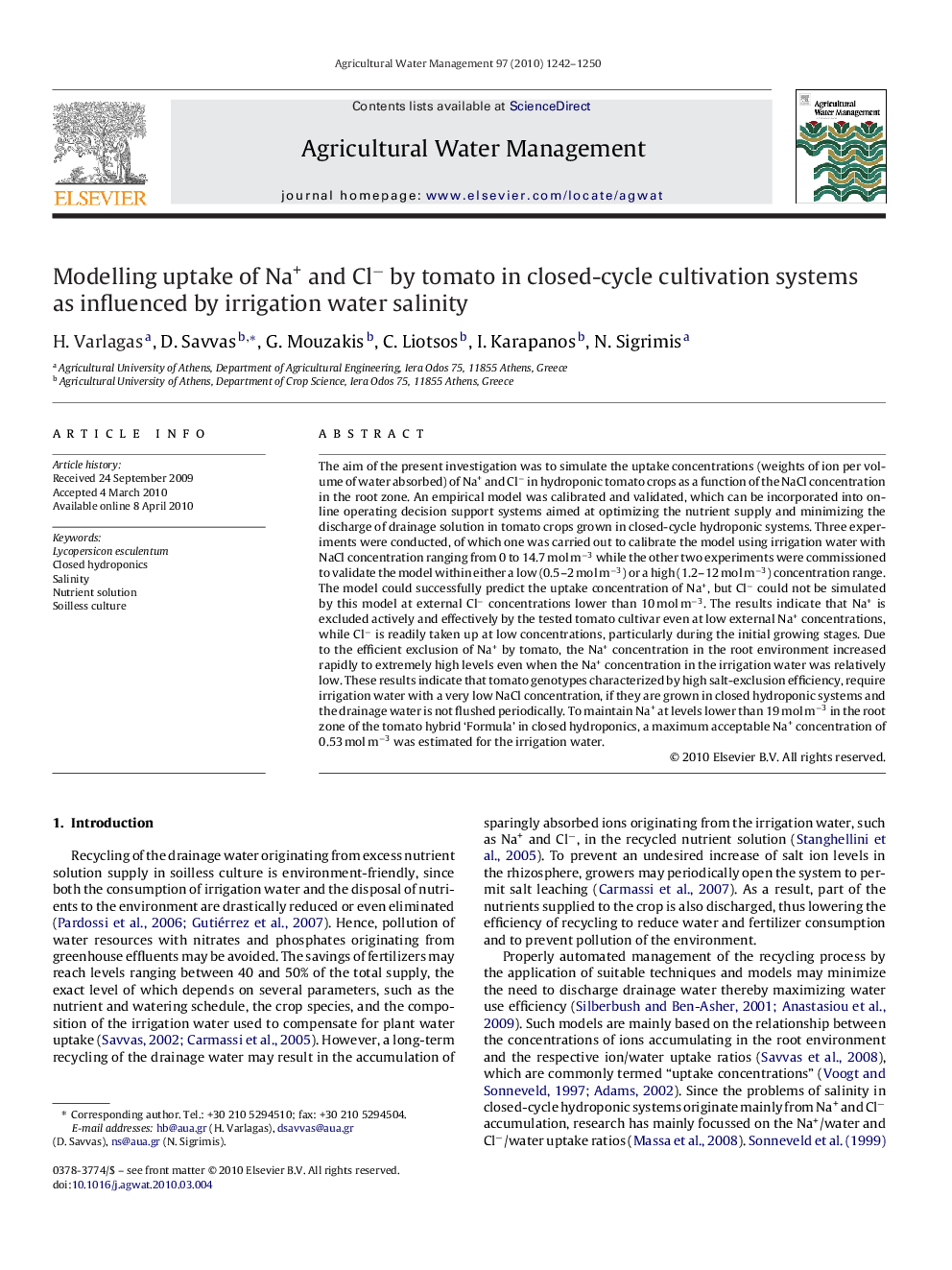| Article ID | Journal | Published Year | Pages | File Type |
|---|---|---|---|---|
| 4479776 | Agricultural Water Management | 2010 | 9 Pages |
The aim of the present investigation was to simulate the uptake concentrations (weights of ion per volume of water absorbed) of Na+ and Cl− in hydroponic tomato crops as a function of the NaCl concentration in the root zone. An empirical model was calibrated and validated, which can be incorporated into on-line operating decision support systems aimed at optimizing the nutrient supply and minimizing the discharge of drainage solution in tomato crops grown in closed-cycle hydroponic systems. Three experiments were conducted, of which one was carried out to calibrate the model using irrigation water with NaCl concentration ranging from 0 to 14.7 mol m−3 while the other two experiments were commissioned to validate the model within either a low (0.5–2 mol m−3) or a high (1.2–12 mol m−3) concentration range. The model could successfully predict the uptake concentration of Na+, but Cl− could not be simulated by this model at external Cl− concentrations lower than 10 mol m−3. The results indicate that Na+ is excluded actively and effectively by the tested tomato cultivar even at low external Na+ concentrations, while Cl− is readily taken up at low concentrations, particularly during the initial growing stages. Due to the efficient exclusion of Na+ by tomato, the Na+ concentration in the root environment increased rapidly to extremely high levels even when the Na+ concentration in the irrigation water was relatively low. These results indicate that tomato genotypes characterized by high salt-exclusion efficiency, require irrigation water with a very low NaCl concentration, if they are grown in closed hydroponic systems and the drainage water is not flushed periodically. To maintain Na+ at levels lower than 19 mol m−3 in the root zone of the tomato hybrid ‘Formula’ in closed hydroponics, a maximum acceptable Na+ concentration of 0.53 mol m−3 was estimated for the irrigation water.
